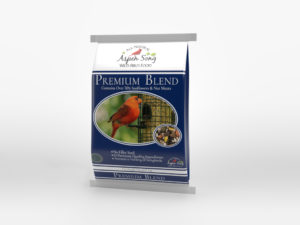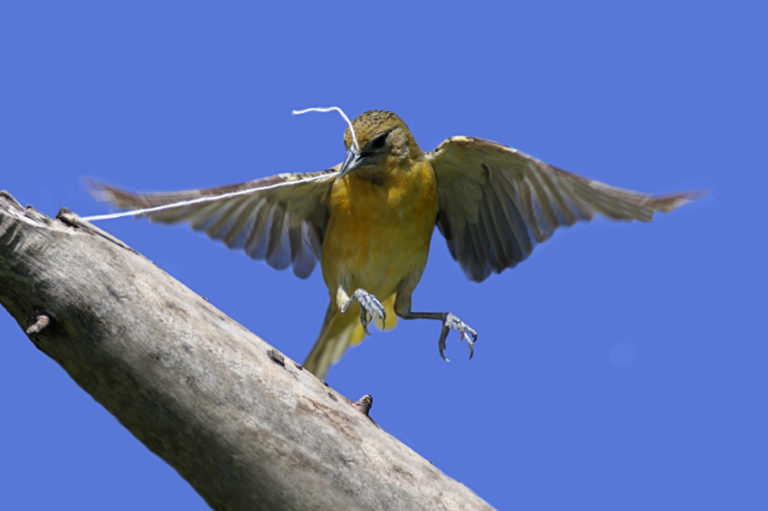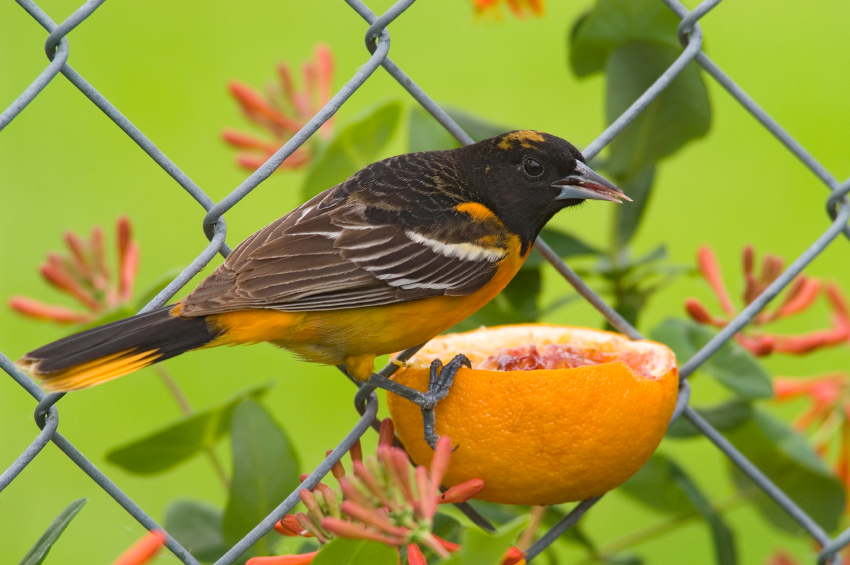Seed Recommendations

Aspen Song® Nut & Fruit Woodpecker
Attracts Woodpeckers, Sapsuckers, & More Mixed Just for Woodpeckers An Alternative to Suet Over 80% Sunflowers & Nuts

Aspen Song® Premium Blend
Contains Over 50% Sunflowers & Nut Meats No Filler Seeds 12 Premium Quality Ingredients Attracts a Variety of

Aspen Song® Nut & Fruit Suet
A High Energy Mix for Woodpeckers, Sapsuckers and Northern Flickers. All the nutritious ingredients of our Nut &
Icterus galbula
Meet a seamstress extraordinaire! In one week’s time the female Baltimore Oriole weaves a hanging gourd-shaped nest that is suspended by its rim from the forked branches of a tree. Her materials of choice include horsehair, twine, string, wool, and plant fibers such as grasses milkweed stems, and grapevine bark.

Female Baltimore Oriole
Unassisted by her mate, she builds this structure, gathering one strand at a time. Hanging upside down from the support branch, she weaves the fibers into a nest that will safely house her, a clutch of eggs, and eventually her hatchlings. The outer woven layer provides structure, a layer of springy fibers create shape, and downy fibers line the inner bottom.
Despite her amazing skills, the oriole is modest about her accomplishment. Nest are located high off the ground and well concealed by adjacent leaves. Nest sites are typically chosen on the leeward side of deciduous trees and away from the trunk where squirrels are abundant. A walk around a neighborhood park in the winter is the best way to find these woven wonders. Of course the nest’s residents will be in Central and South America by that time of year.
While she is best known for her industry and skill, the male Baltimore Oriole is familiar for his beautiful plumage and lovely song. Bright orange color contrasts with a black head, upper mantle, wings, and tail. Notice a single white bar on his wing. His song is rich, robust, and flutelike, with a cadence reminiscent of the American Robin. Approach too closely and you may hear a scolding chatter call.

Male Baltimore Oriole
These neo-tropical migrants are fruit and insect eaters, so they are unlikely to visit seed feeders. Occasionally, they are reported at suet feeders, but the best strategy for attracting them into view is with fruit or nectar. Orioles will drink from hummingbird feeders in spite of the fact that the feeders are sized for much smaller birds! A better choice is to invest in a nectar feeder designed specifically for orioles. The best are saucer-style feeders with large ports for larger bills, and sturdier perches. A mixture of one part sugar to five parts water will imitate natural nectar well. Be sure to change the solution weekly, or more frequently in especially warm weather. The other effective lure to Baltimore Orioles is to offer fruit. Impaling a half an orange or grapefruit on a branch or finish nail in a tree or shrub will often bring them into view.
Reference
Rising, James D. and Nancy J. Flood. 1998. Baltimore Oriole (Icterus galbula), The Birds of North America Online (A. Poole, Ed.). Ithaca: Cornell Lab of Ornithology.